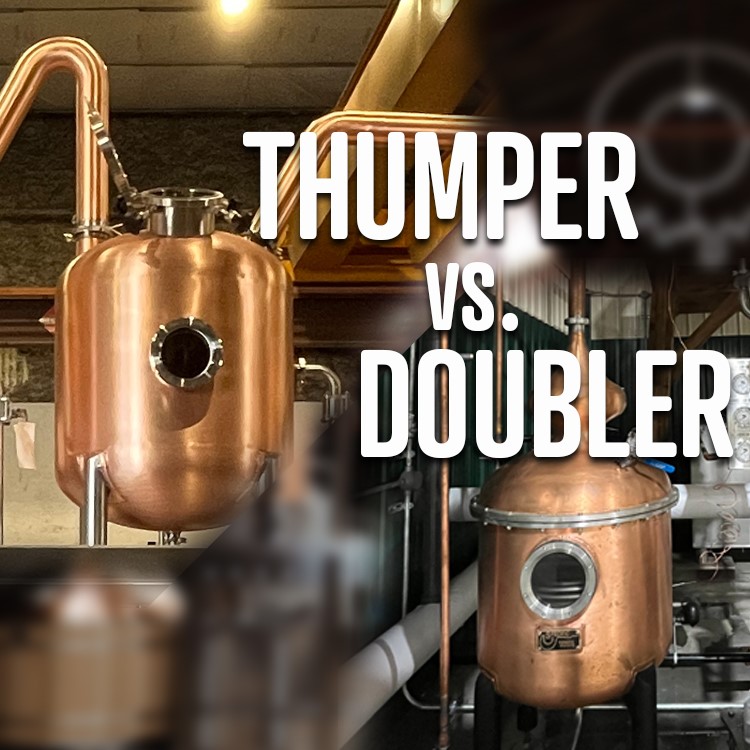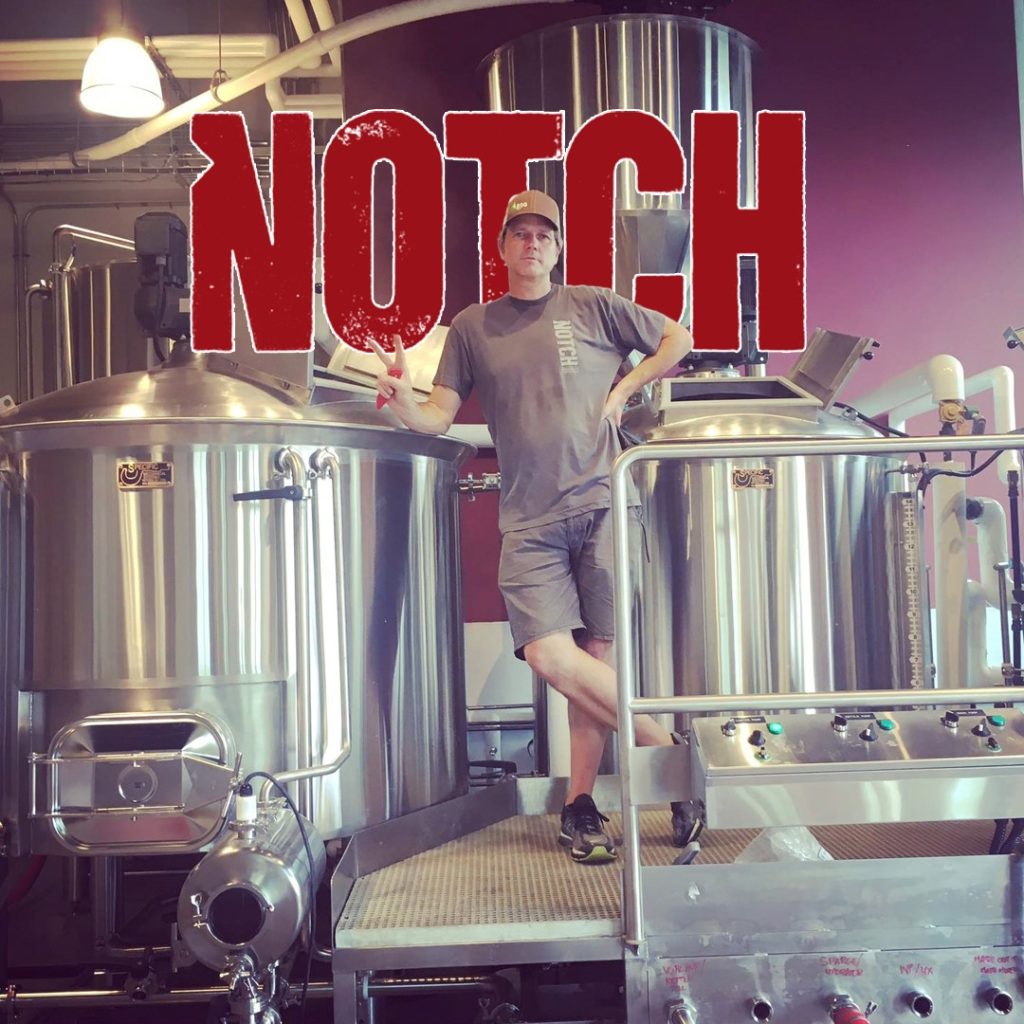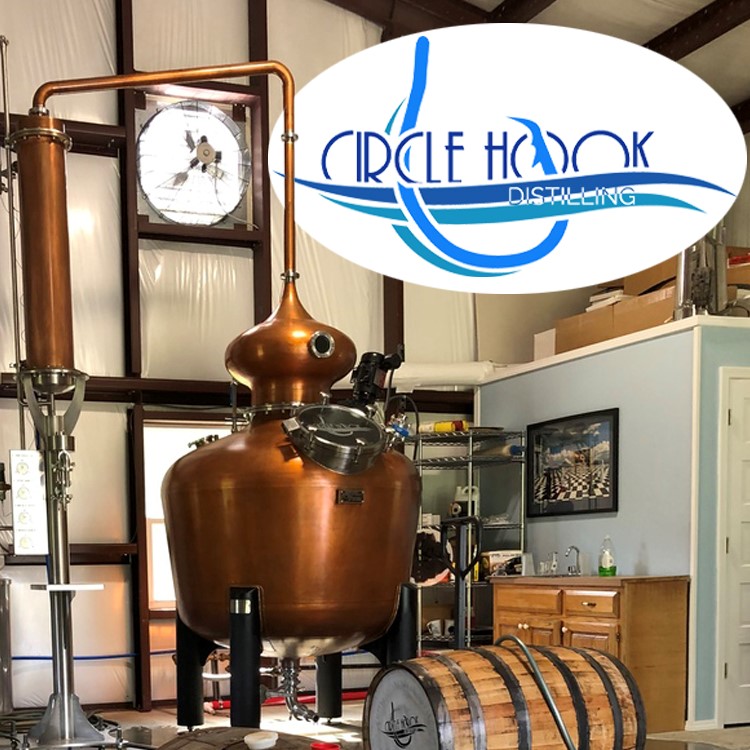In alcohol distillation, Thumpers and Doublers are both secondary distillation devices used primarily in traditional pot still setups. While they serve similar purposes, such as increasing the alcohol content and improving flavour profiles, their design and functions differ.
Thumper
A thumper (or thump keg) is a chamber located between the main pot still and the condenser. It’s named after the “thumping” sound made as the vapor enters the chamber. The thumper uses the heat from the vaporized alcohol that comes off the main pot to further distill the liquid. Inside the thumper, there’s often a liquid (like low wines or mash) that gets reheated and vaporized again. This additional distillation step boosts the alcohol content, removes more impurities, and enhances the flavours without requiring a second full distillation run.
The thumper is often used in traditional moonshining and creates a smoother, more refined spirit by essentially acting as a mini still within the main still.
Doubler
A doubler, on the other hand, is similar in function but is typically used in commercial column stills rather than traditional pot stills. It performs a secondary distillation, just like the thumper, but without holding a significant amount of liquid inside. The doubler re-distills the vapor directly to increase alcohol content and improve purity. This process is more efficient and controlled in modern distillation setups, especially for high-volume production.
Unlike thumpers, doublers are mostly associated with large-scale operations, such as in whiskey or bourbon production, where consistency and high proof are essential.
Key Differences
- Design: Thumpers hold liquid and use the heat of alcohol vapors to re-distill it, while doublers are dry chambers that re-distill the vapor without the use of additional liquid.
- Usage: Thumpers are common in traditional, small-batch distilling (e.g., moonshining), while doublers are more typical in commercial distilleries.
- Operation: Thumpers produce a thumping sound as vapor enters, while doublers operate more quietly in an industrial setup.
Both devices effectively increase the purity and proof of the alcohol, but they are designed for different types of distillation setups and scale.





